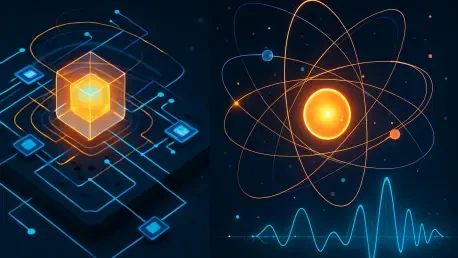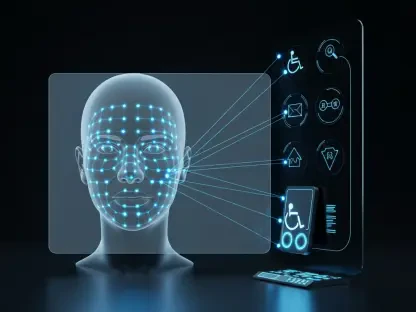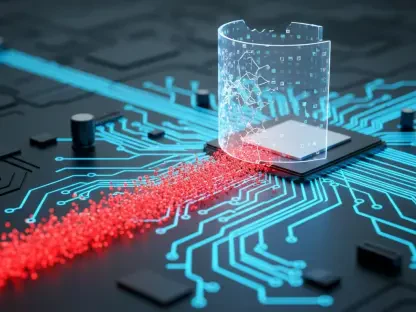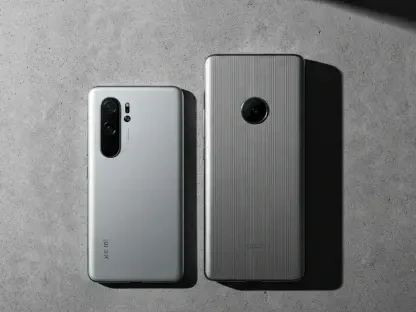In a groundbreaking moment for science, the Royal Swedish Academy of Sciences has awarded the Nobel Prize in Physics to three pioneering physicists—John Clarke, Michel Devoret, and John Martinis—for their transformative contributions to quantum mechanics. Their remarkable discovery of macroscopic quantum mechanical tunneling and energy quantization in electric circuits has redefined the boundaries of physics, proving that quantum effects can be observed not just at atomic levels but in larger, human-engineered systems. Announced on a Tuesday, this prestigious recognition highlights decades of work that began with experiments in the 1980s, using superconducting circuits cooled to near absolute zero. The implications of their findings ripple through modern technology, touching everything from quantum computing to secure communication systems. This honor not only celebrates a historic achievement but also underscores the profound influence of quantum theory on the digital age, sparking curiosity about how such abstract science continues to shape tangible innovations.
Pioneering Quantum Breakthroughs
The journey of Clarke, Devoret, and Martinis into the quantum realm began with a bold challenge to conventional physics, demonstrating that principles once confined to the microscopic world could manifest in larger systems. Their experiments focused on Josephson junctions, specialized devices made of two superconductors separated by a thin insulator. Through these setups, they showcased quantum tunneling—a phenomenon where electrical current passes through barriers in ways that defy classical understanding. This revelation was achieved under extreme conditions, with circuits cooled to temperatures close to absolute zero, allowing quantum effects to emerge on a scale previously thought impossible. Their work provided concrete evidence that quantum mechanics could operate beyond the subatomic, opening new avenues for scientific exploration and challenging long-held assumptions about the limits of physical laws.
Beyond the initial discovery, their research revealed another critical insight: energy in these circuits was absorbed and released in discrete packets, known as quanta, aligning perfectly with theoretical predictions of quantum behavior. This energy quantization in macroscopic systems was a pivotal moment, validating complex theories that had lingered in academic circles for decades. The trio’s meticulous experiments not only confirmed the scalability of quantum effects but also set a precedent for future innovations. By bridging the gap between abstract theory and observable phenomena, their findings became a cornerstone for understanding how quantum principles could be harnessed in practical applications. This breakthrough reshaped the scientific community’s perspective, proving that quantum mechanics held untapped potential for real-world impact far beyond laboratory settings.
Technological Impact and Modern Applications
The influence of the physicists’ discoveries extends deep into the fabric of today’s technological landscape, particularly in the realm of quantum computing. Their pioneering work with superconducting circuits has become the foundation for superconducting qubits, the building blocks of quantum computers being developed by industry leaders like Google and IBM. These systems promise to solve complex problems at speeds unattainable by classical machines, revolutionizing fields from drug discovery to cryptography. The ability to observe quantum effects in larger circuits has directly enabled the design of processors that leverage superposition and entanglement, pushing the boundaries of computational power. As a result, their contributions are not just academic milestones but catalysts for a technological shift that continues to redefine digital capabilities.
Moreover, the implications of their research stretch into other cutting-edge domains like quantum sensors and secure communication systems. Quantum cryptography, for instance, relies on principles derived from their experiments to create unhackable data transmission methods, addressing critical needs in cybersecurity. Similarly, quantum sensors, which offer unprecedented precision in measuring physical properties, owe much to the foundational understanding of macroscopic quantum effects. These advancements illustrate how a discovery rooted in fundamental science can ripple outward, transforming industries and enhancing societal infrastructure. The ongoing development of these technologies, expected to mature further from now through the next few years, highlights the enduring relevance of the trio’s work in shaping a future driven by quantum innovation.
Recognition and Future Implications
Receiving the Nobel Prize, complete with a shared award of 11 million Swedish kronor (approximately $1.17 million), marks a pinnacle of recognition for Clarke, Devoret, and Martinis, with the formal presentation set for December 10 by the King of Sweden. Their emotional responses to the honor add a human dimension to this scientific triumph, with Clarke describing the award as the most astonishing surprise of his career while commending the immense contributions of his colleagues. Olle Eriksson, Chair of the Nobel Committee for Physics, emphasized the continuous surprises offered by quantum theory, noting its role as the bedrock of modern technology. This acknowledgment not only celebrates past achievements but also amplifies the global conversation about how quantum mechanics influences everyday tools, from smartphones to advanced computing systems.
Looking back, the awarding of this prize reflected a turning point in recognizing how far quantum mechanics had come from theoretical musings to practical revolutions. The legacy of Clarke, Devoret, and Martinis lies in their ability to transform abstract concepts into tangible progress, inspiring a new generation of scientists and engineers. As their discoveries continued to fuel advancements, the focus shifted to ensuring these technologies became accessible and scalable for widespread use. Exploring collaborations between academia and industry emerged as a vital next step, alongside addressing ethical considerations in quantum applications. Their honored work served as a reminder that the journey of innovation was far from over, with countless possibilities waiting to be unlocked in the quantum realm.









